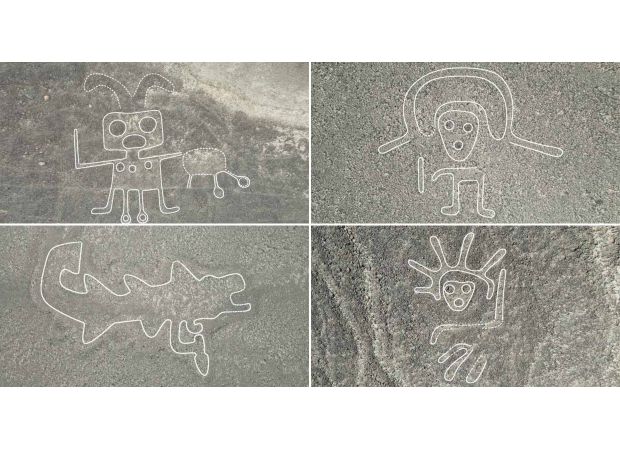Ancient desert patterns discovered, featuring 'Wall-E' and alien depictions.
Ancient lines were carved into the desert 220 miles south of Lima between 500 BC and 500 AD.

Ancient lines were carved into the desert 220 miles south of Lima between 500 BC and 500 AD.


